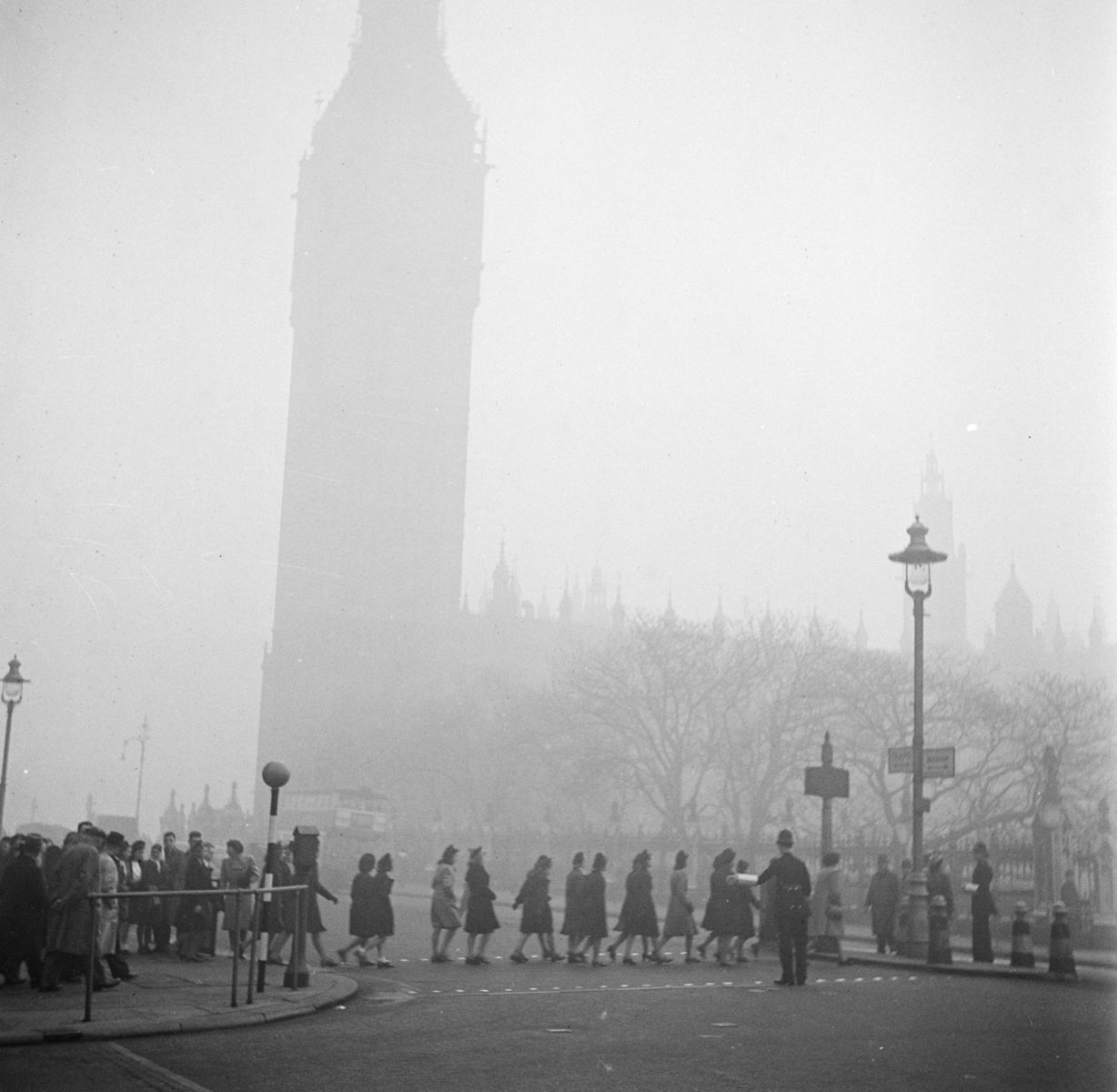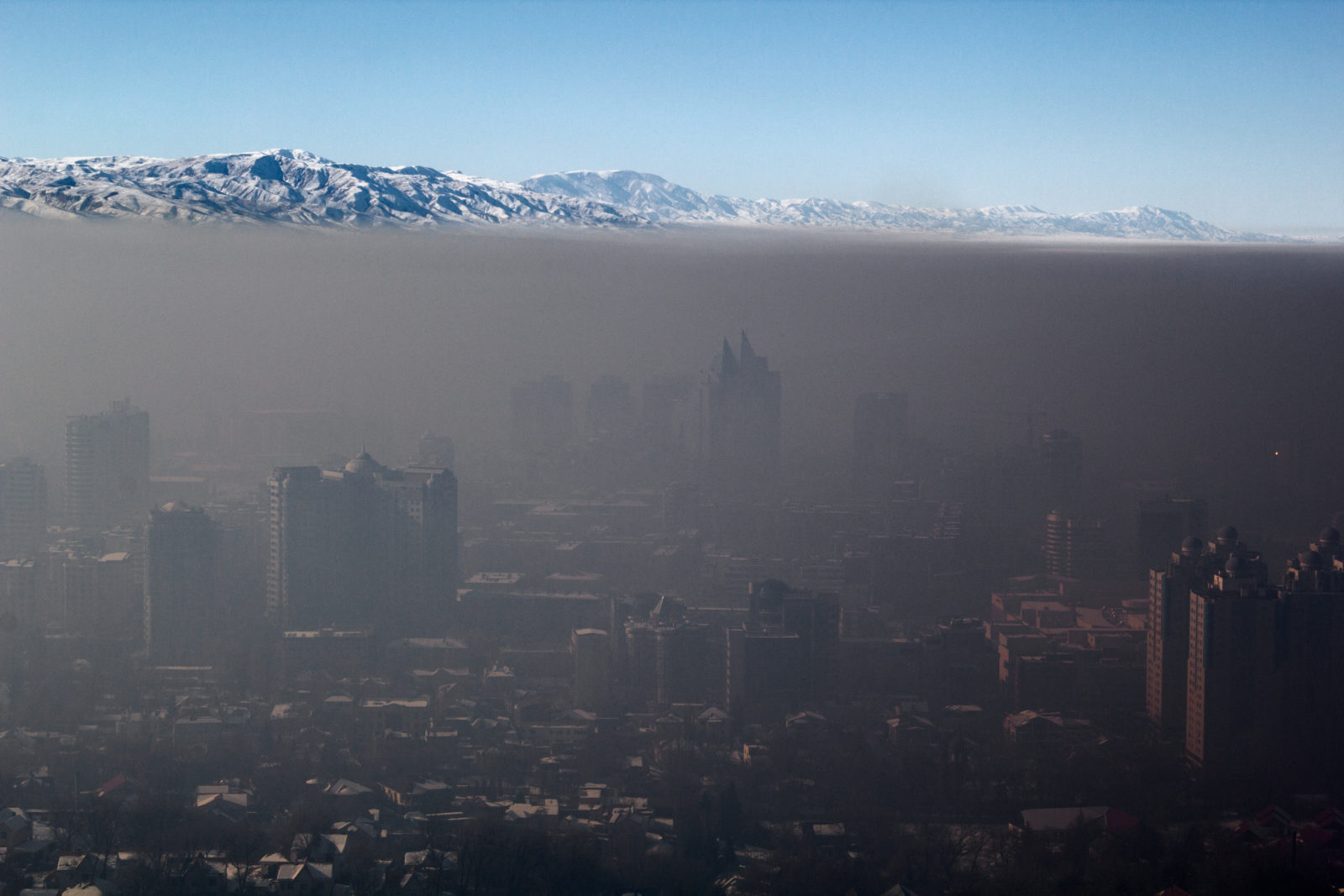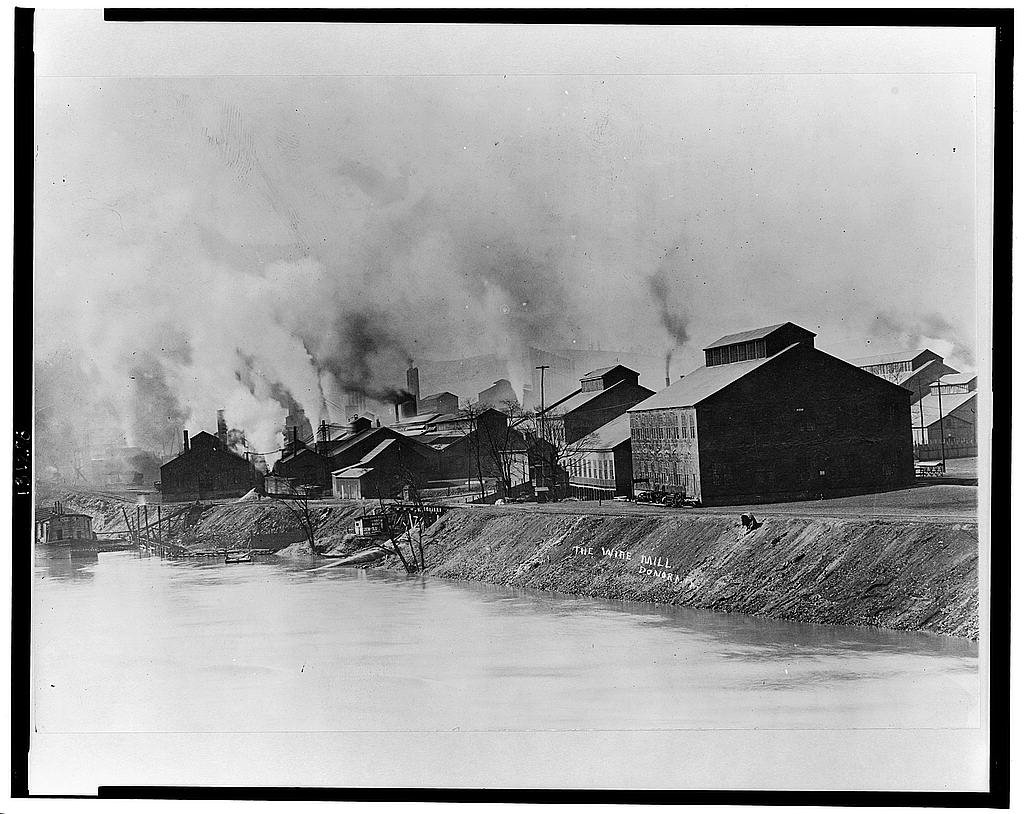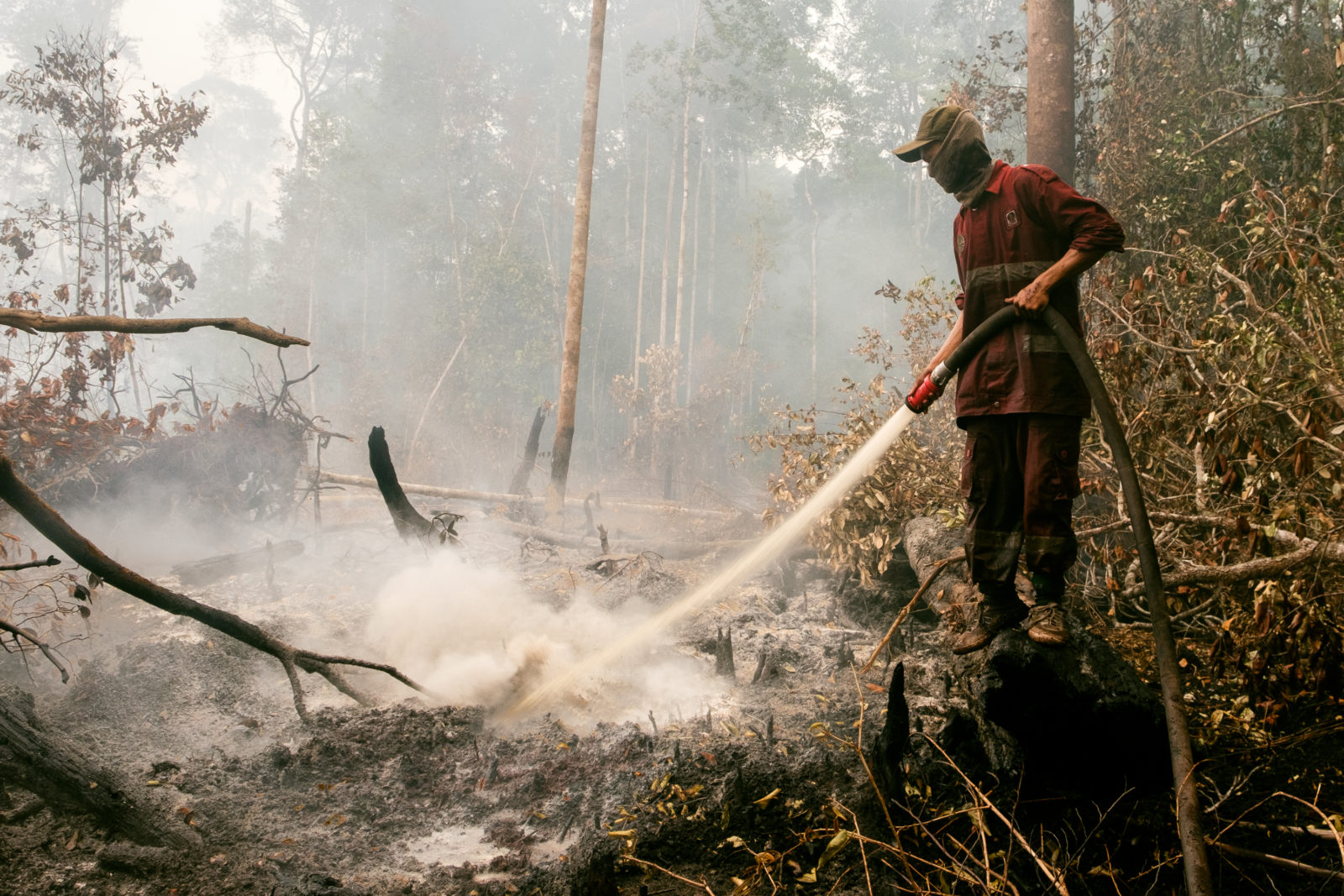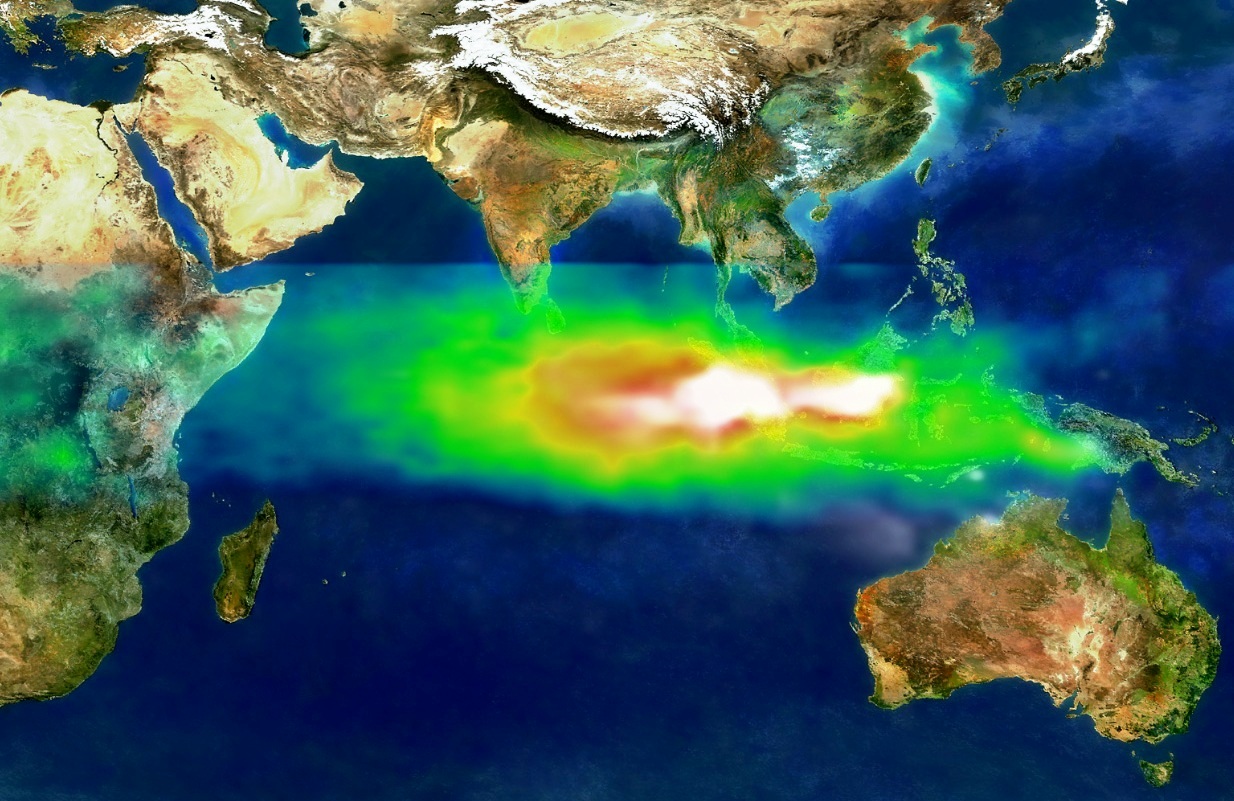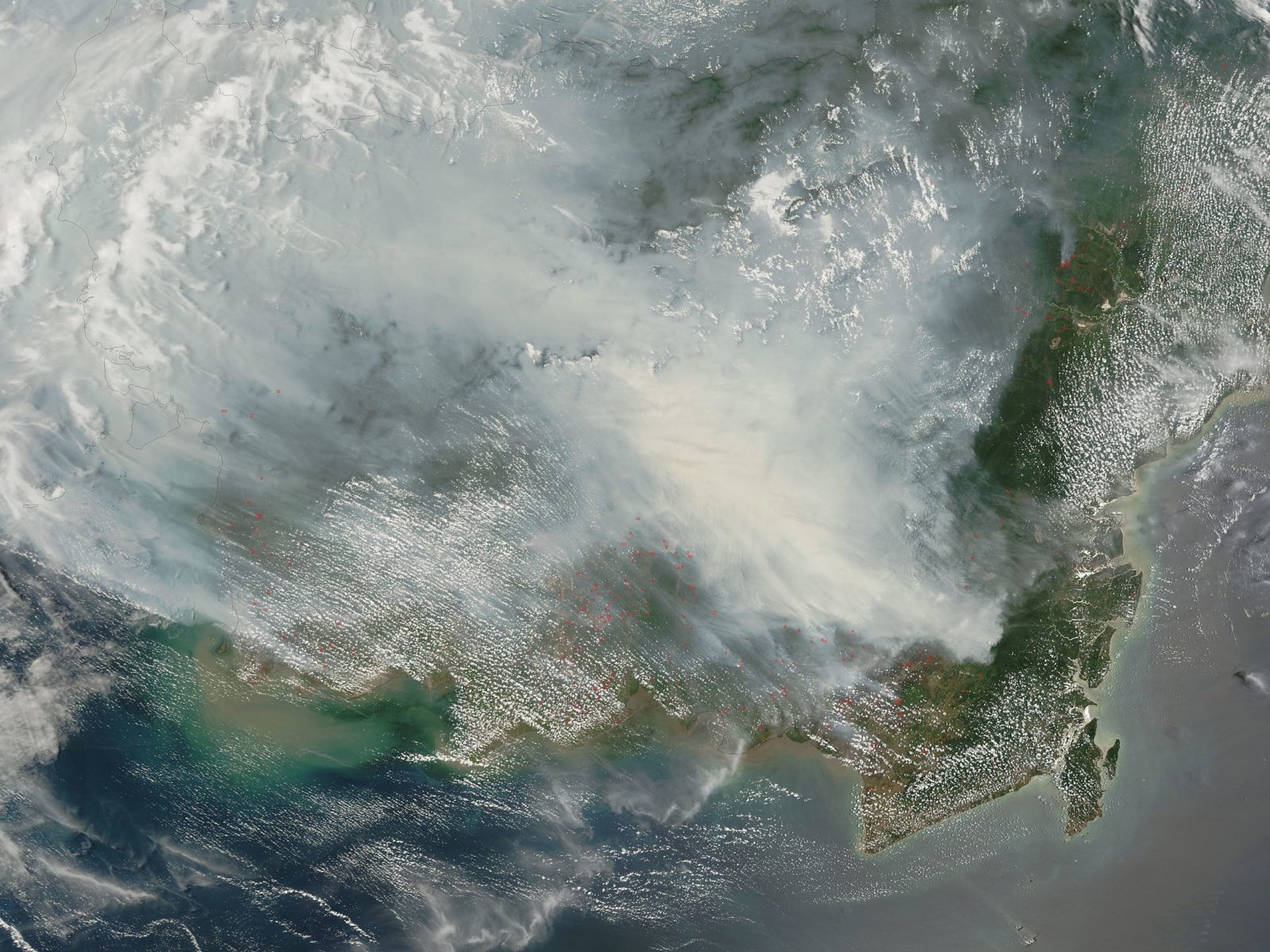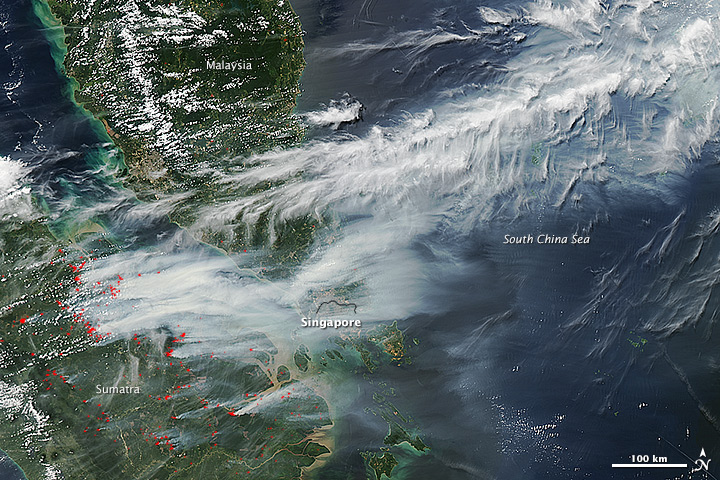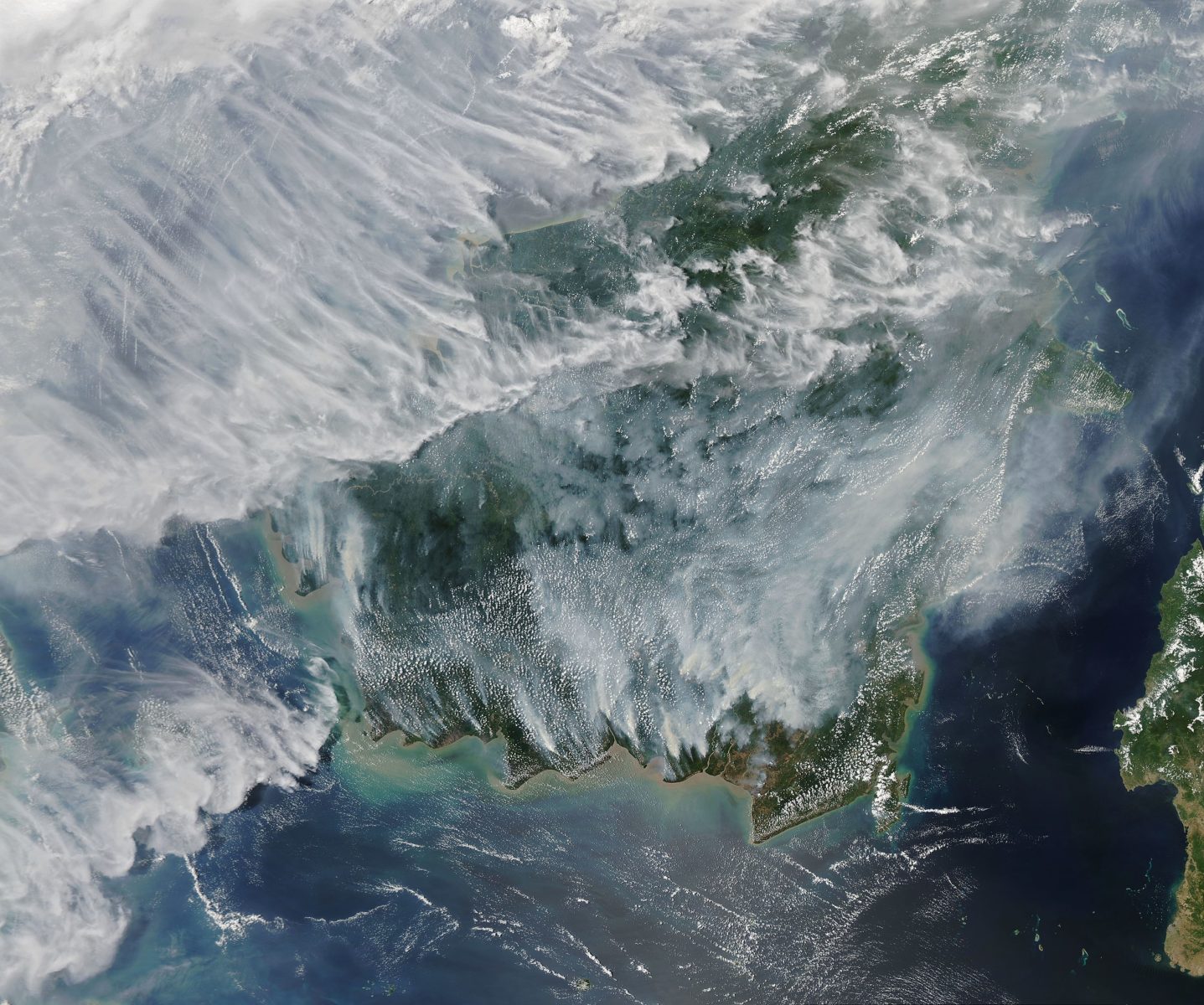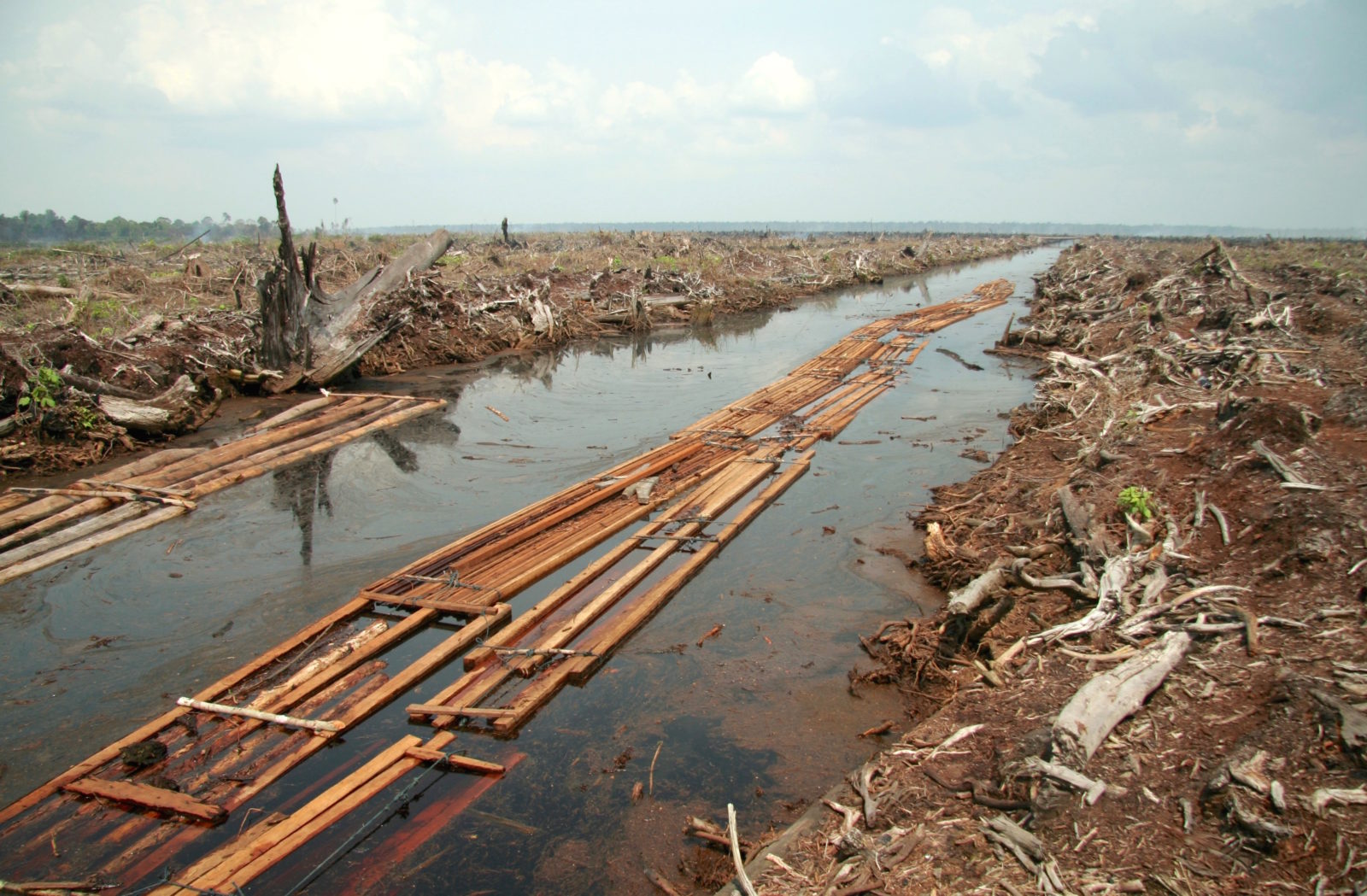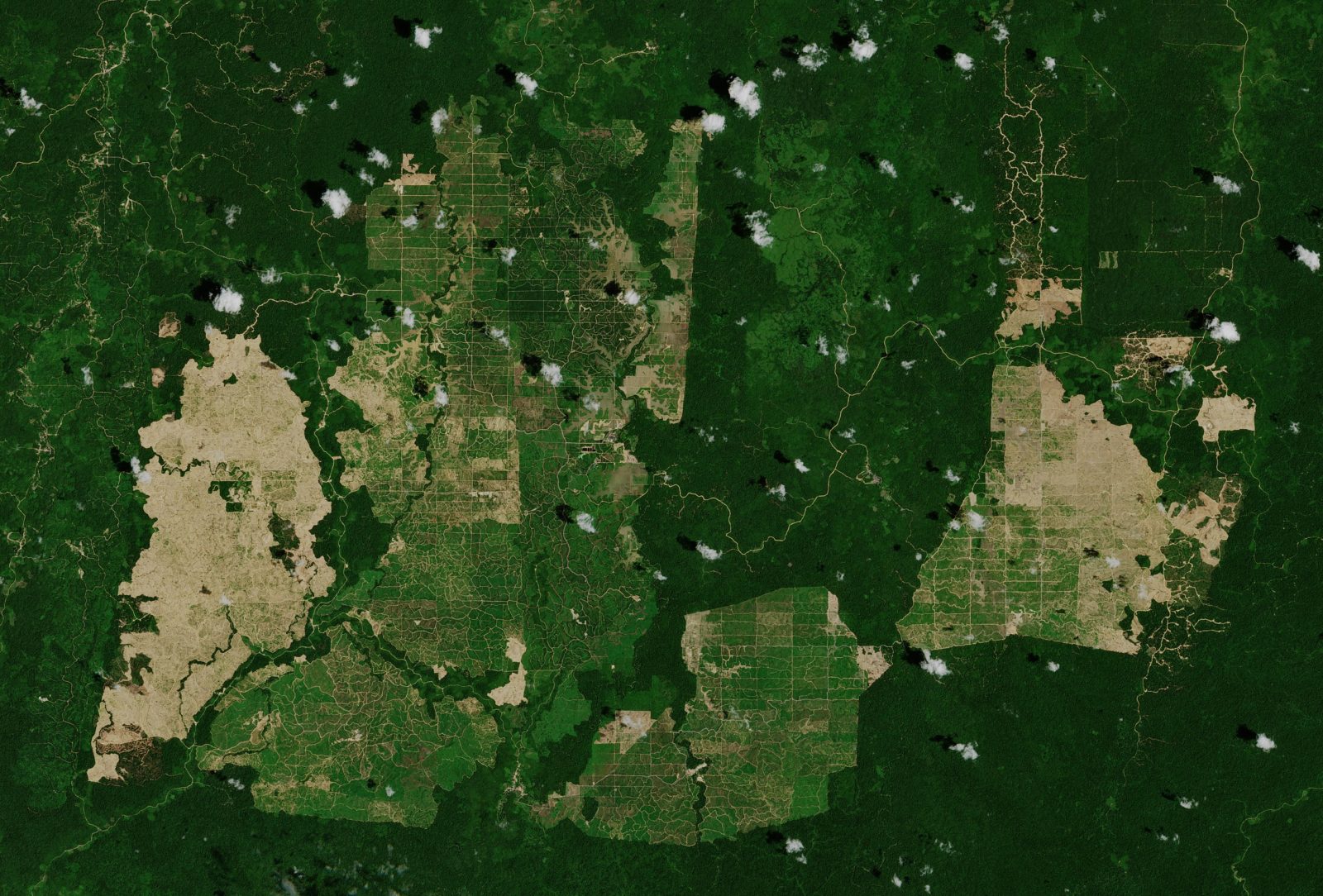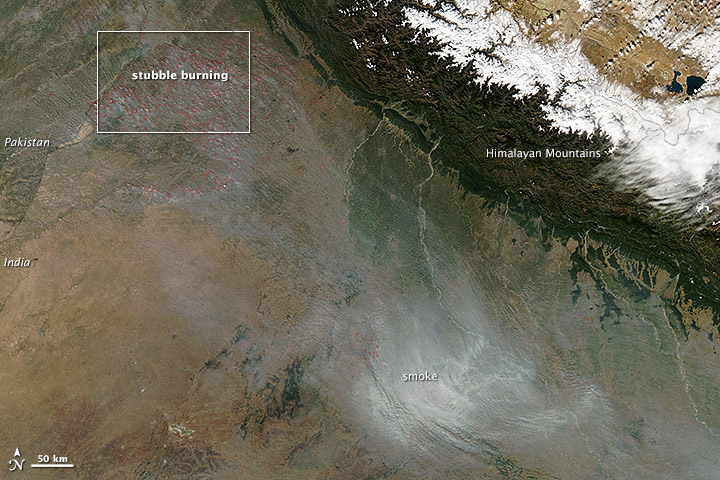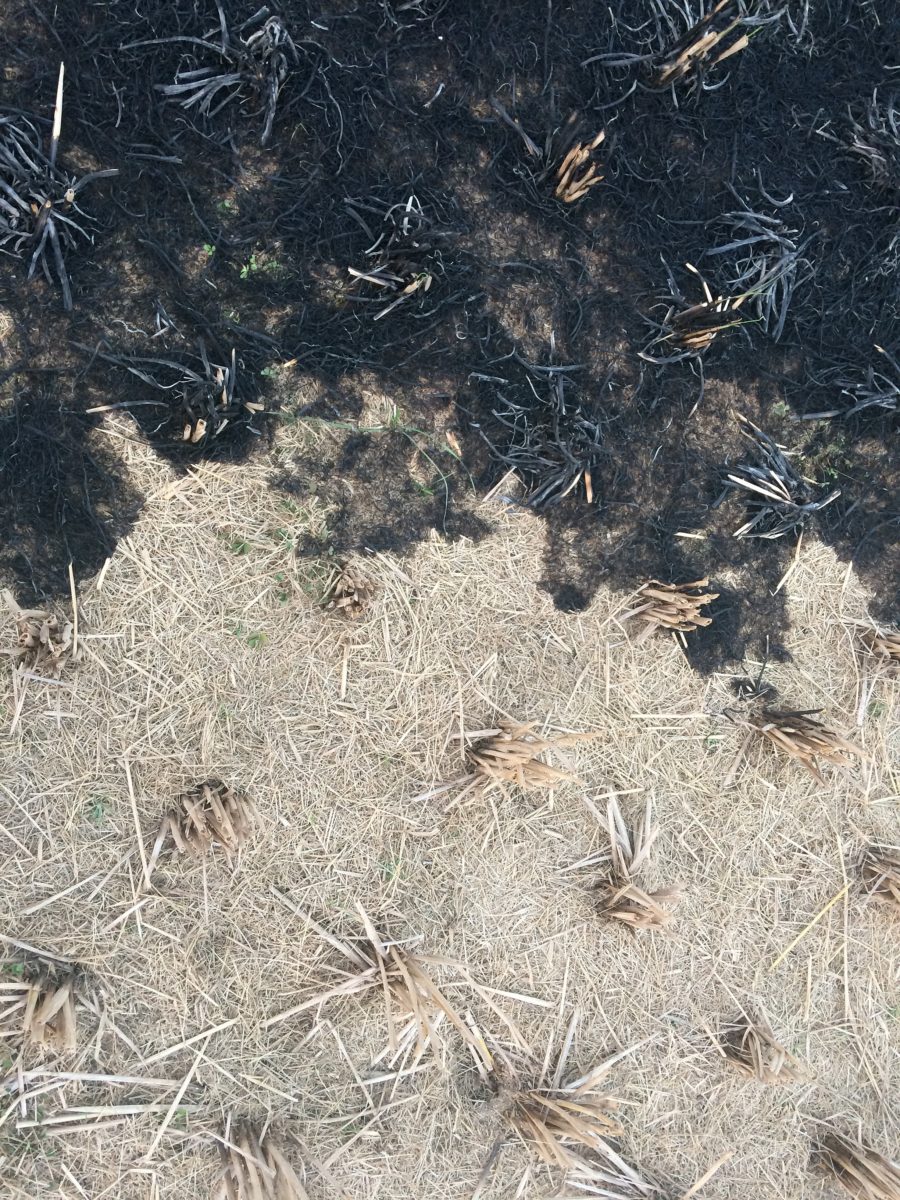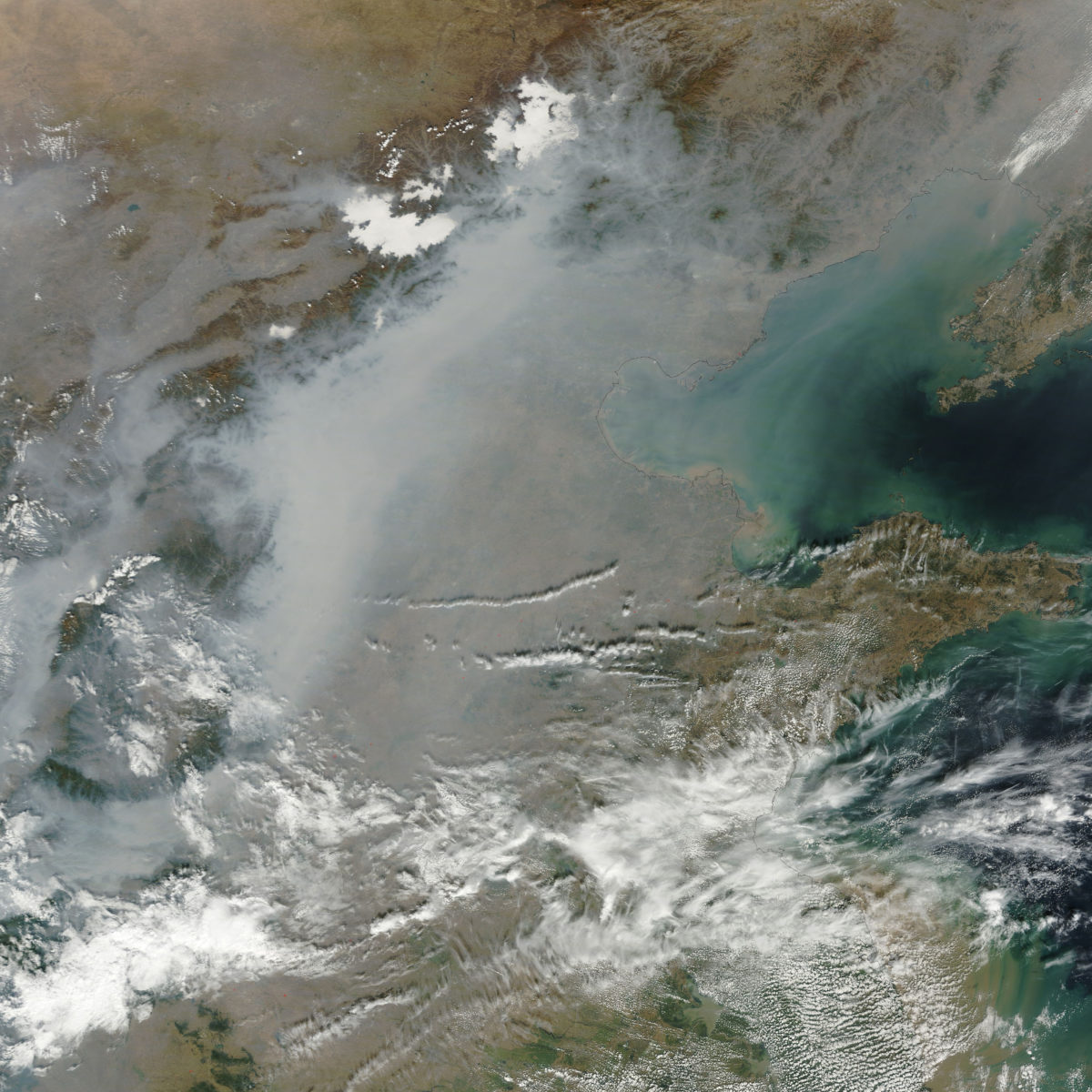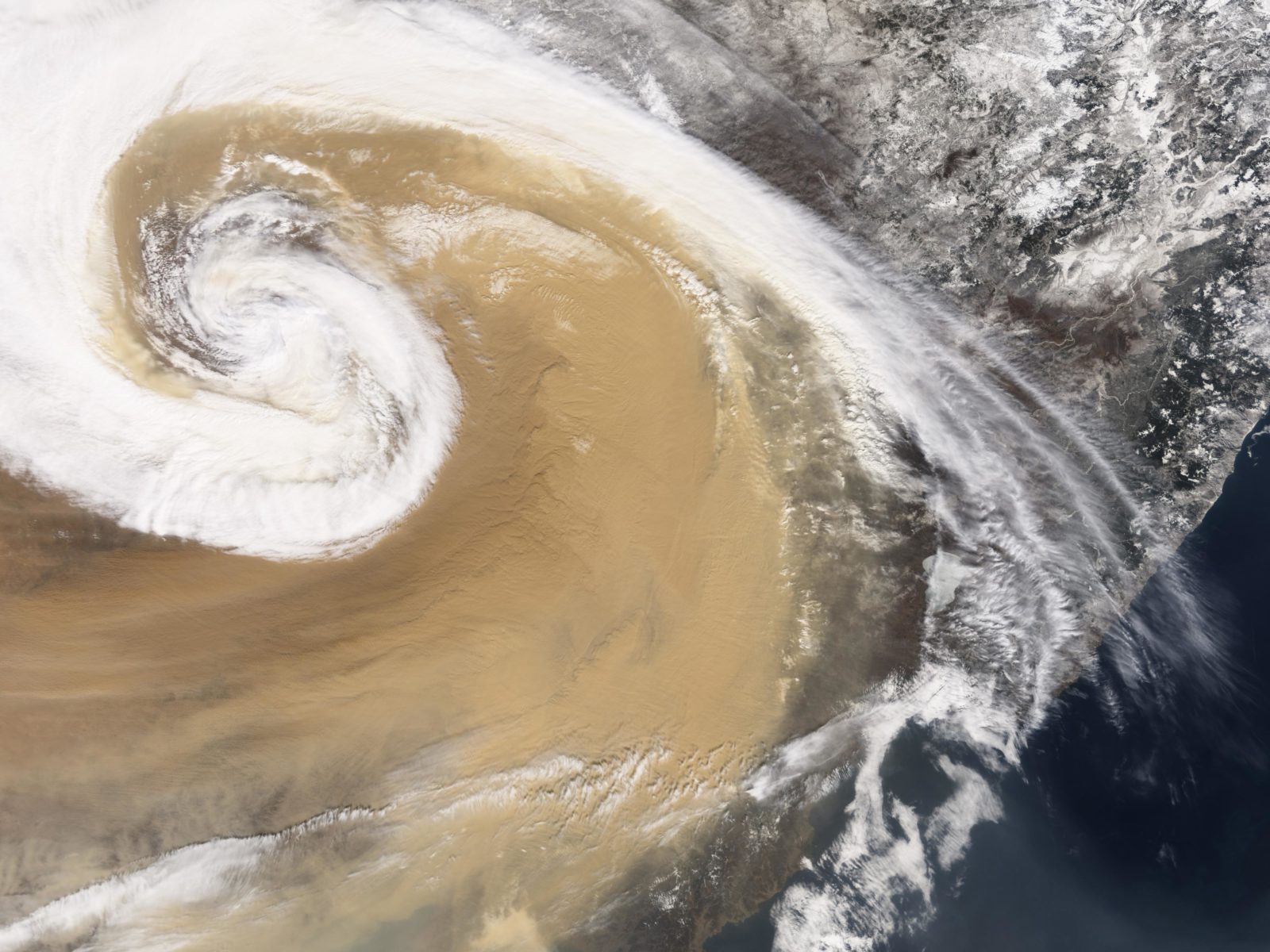The Breathable Materiality of Combustion
The global expanse of air pollution in the Anthropocene
Air pollution is currently the top environmental killer. The fleeting nature of atmospheric pollution often keeps it from being observed through a global perspective and being included in the planetary cycles of the Anthropocene. Atmosphere enthusiast Riddhima Puri sets out to explore its temporal and spatial scale as part of the intersection between human history and deep geological time. She uncovers the effects of the anthropogenic pollutant black carbon on a journey from the smog-filled streets of St. Louis, Missouri during “Black Tuesday,” 1939, to the burning tropical forests in Indonesian provinces of 2019.
In the mid-nineteenth century, London—the largest city in the world’s wealthiest nation—came to be characterized by its distinct smell. A rapidly growing population had strained the fresh water supply, and the Thames River, the city’s sewage dump, began to overflow with human and industrial waste. In 1858, a heat wave swept the smell through homes and offices, an event which came to be known as the Great Stink. And despite reforms for “cleanliness” later in the century, London’s miasma persisted. The infamous London fogs of the twentieth century regularly choked the city.1 But in a sense, the air of London was not so unique; by the mid-twentieth century, in cities from Great Britain to Japan exhaust fumes from homes, industry, and vehicles were affecting thousands of lives every year. Osaka, an expanding industrial city in the late nineteenth century, was mockingly called “The City of Smoke,” and the city’s air pollution only worsened in its post-Second World War reconstruction and rapid industrialization. Osaka’s industrial growth was itself only part of the broader reconstruction of commercial and industrial sites destroyed during the war, a process that poisoned waterways, caused acid rain, and affected plant and vegetation growth across Japan.2
Street crossing near Big Ben in London, 1954. Photograph by Willem van de Poll from Dutch National Archives via Wikimedia, public domain
While the Great Stink and the City of Smoke are each the result of specific factors, the pattern of booming or developing cities creating life-threatening changes in the air is far from a localized phenomenon, either spatially or temporally. On a given winter day in the past decade, an average Delhiite in the National Capital Region of India breathes air equivalent to smoking around fifty cigarettes.3 Lingering smoke from fires in Indonesia has caused schools to close down in Kuala Lumpur, the capital of Malaysia, several times since 2005.4 Stagnant clouds of smog have engulfed the Pakistani city of Lahore, with regular reports of air pollution reaching levels well above the hazardous level.5
Worldwide, air pollution is currently the top environmental killer, causing 3.5 million premature deaths every year. For decades, gray skies and a lingering acrid smell have clouded over the fatal and appalling consequences of toxic air whose cumulative effects now surpass those of poor sanitation and the lack of clean drinking water.6
But how does one grasp these effects in the context of the Anthropocene and anthropogenic markers? To do so, it is essential to inspect the material manifestations or composition of the air that filled “The City of Smoke” or covers Kuala Lumpur. The Earth’s atmosphere contains particulates, also referred to as atmospheric aerosols or particulate matter, which are suspensions of solid, liquid, or mixed particles in air produced naturally or through human activities. One of the primary particulates in air pollution is a carbonaceous aerosol called black carbon (BC). Proposed as a combustion marker for the Anthropocene by the Anthropocene Working Group (AWG), BC takes a variety of forms—charcoal, soot, industrial fly-ash—that make up the black carbon “combustion continuum.”7 In the atmosphere, BC appears as smog and haze, forms of air pollution linked to short- and long-term health problems, as the tiny pollutant particulates (just a few micrometers in diameter) can travel deep inside the human respiratory tract, affecting lung function and cardiovascular activity.
Despite its close interaction with the internal biological landscape of human bodies and their external living environments,8 the issue of air pollution is often not viewed as an imminent global danger, unlike climate change. However, air pollution—relatively short-lived but recurring changes in the air’s composition—and the planetary crisis of global warming are interrelated. BC is a climate-modifying pollutant which interacts with the complex atmospheric fabric of the Earth’s ecosystem. It is the main anthropogenic light- or heat-absorbing aerosol in the atmosphere and is generated from the combustion of biomass or fossil fuels. It scatters and absorbs solar radiation, affecting cloud formation, and modifying cloud properties (BC particulates can serve as cloud condensation nuclei and ice nuclei), hence changing the Earth’s radiation balance.9 In other words, BC takes shape as dangerous air pollution in the short term and contributes to the warming of the Earth in the long-term—a change which can further augment the presence of air pollution. Differences in land-sea warming, for example, drive changes in rainfall. Not just the grounds for devastating droughts, the shift in the pattern of rain also increases the concentration of air pollutants which it would otherwise remove.10
Air pollution is a large environmental risk which interacts directly with several aspects of socio-economic development, especially climate mitigation targets and clean energy services,11 on a temporal and spatial horizon much greater than previously thought. This essay explores the “nonlocal” scale of these interactions in the sections below, hoping to reframe the problem of pollution at the strange intersection of human history and deep geological time.
The first “act of humans”?
In the form of smoke, pollution is as old as fire itself. Records of sensory perception of polluted air go back centuries or even millennia where in many contexts, “bad air” did not simply exist as an “aesthetic concern,” but was linked to disease through foul air and odors under miasma theory. One early example connecting air and health is The Hippocratic Corpus, the ancient Greek medical works associated with Hippocrates of Kos (c. 460–c. 370 BC). In Rome, Seneca blamed his ill health on the city’s “oppressive atmosphere” and the “awful odour of reeking kitchens which, when in use, pour forth a ruinous mess of steam and soot.”12 Negative connotations of smoke also appeared in texts from the ancient Persian world and tenth-century Arabic medical writings.13 In Jingdezhen, the porcelain capital of pre-modern China, smoke was not an unknown nuisance either. The Jingdezhen kilns were responsible for massive smoke emission and other environment-degrading activities (like deforestation) for about a thousand years, and stand as a symbol for “China’s premodern Age of Smoke.”14
By the early nineteenth century, however, scientific and political practices started to more actively shape their societies’ intercourse with the environment. In 1804, with the outbreak of yellow fever, the Spanish government ordered the famous fumigating machine designed by Louis-Bernard Guyton to “destroy the contagious miasmas in the air, objects, and bodies.”15 Much like other sanitary regulations concerning housing and sewage in France and England, the deployment of these practices signaled political awareness around urban health which would continue to increase through the century; concern grew in tandem with Europe’s industrialization and particularly with the wide adoption of the steam engine, which made sooty skies a common occurrence. Regulating air pollutants became necessary. Though smog was still considered to be more annoying than dangerous, its transport in the atmosphere remained unknown and regulators could not write effective laws targeting industries or the common household. Ineffectual efforts to curb pollution from furnaces and steam engines in Great Britain date back as early as 1819, followed by almost a century of negligence: the result was the infamous Great Smog of London in 1952. The city was engulfed by an intense four-day smog which took the lives of at least 4,000 people (according to recent studies, the full number could look more like 10,000–12,000) and caused about 100,000 cases of respiratory illness.16
Many other regions saw similar environmental disasters during the twentieth century, linking morbidity and mortality, meteorology, and human-made air pollutants.17 One of the first recorded severe events took place in Liege and the surrounding area along the Meuse River in Belgium—the country’s leading steel industry site—in December of 1930. Over the course of just five days, a seemingly-normal fog (now known to be smog) killed about 60 people and triggered severe respiratory symptoms in almost 6,000 people and a number of domesticated animals. The banks of the Meuse had seen previous episodes of “poisonous fog,” notably one in 1897 when “fog asthma” affected cattle. But in 1930, the winter climate conditions, characterizing the area’s weather by low-speed wind and a temperature inversion (warm air on top of cold air), trapped air pollutant particles, increasing the concentration of hazardous aerosols and affecting visibility and air toxicity.18
A similar deadly smog marked a “Black Tuesday” in St. Louis, Missouri in November 1939, where, amplified by temperature inversion in the atmosphere, decades of coal-smoke pollution resulted in partial nightfall during the middle of the day. And in New York City, hazy skies claimed hundreds of lives in the 1950s and 60s, pushing the city into first-stage smog alert—signaling very unhealthy air quality—in 1966.19
But the worst known air pollution event in the United States occurred in late October 1948. The conditions were similar to those on the Meuse River in 1930. A thick smog, likely originating from the nearby U.S. Steel’s zinc plant, trapped by a thermal inversion, hung over Donora, Pennsylvania for five days, killing 20 people and causing respiratory problems in nearly half of the town’s 14,000 residents.20 So catastrophic and unexpected, U.S. Steel labeled the incident as “an act of God.”21
What makes the Donora tragedy a clarifying example is that the “nature-” or weather-blaming position of the company was supported by scientific uncertainty. On a regular human life scale, air pollution events only lasted for a few days at a time, with clear skies following at most a week later, and so the smog was interpreted as just a feature of weather—atmospheric conditions over a short period of time. Moreover, air pollution was not linked to any specific disease; despite a sophisticated scientific understanding of particle transport in the atmosphere—studies of atmospheric turbulence and diffusion progressed in the 1800s, and research on gaseous warfare expanded during the two World Wars—the exact relationship between air-borne particulates, industrial emissions, and health remained debatable.22 Air quality is ever-changing, so pollution and its effects were never visible as a whole.
A wire mill on the banks of the Monongahela River in Donora, Pennsylvania in 1910. Courtesy Library of Congress, public domain
Across all these air pollution events, the prolonged time scale becomes apparent in the fact that all these smog-filled cities were centers of fast-developing industries. These industries are now understood to be clearly contingent on anthropogenic activities with dire environmental consequences. And what were once “natural events” are now seen to be the results of human activity, demanding further human action and responsibility for the sake of protecting and nurturing nature, as Lorraine Daston has discussed.23 The “act of God” of fatal smog can finally be re-labelled as an “act of humans.”
The enormous shroud of black carbon
In addition to polluted air’s strange temporality, its spatial distribution also becomes unintuitive as it is shaped by nonlocal forces. Once confined only to the source of emissions—stoves, chimneys, factories, etc.—the effects of polluted air now materialize over entire continents. First noticed in 1750, “Arctic haze,” an air mass in the far north almost as large as the African continent, is now understood to be a product of anthropogenic activity. The haze contains black carbon transported hundreds of kilometers from its source—mostly, the industrialized zones of mid-northern latitudes—by air currents. The carbonaceous aerosol in the haze absorbs sunlight, decreasing the albedo24 and warming the polar atmosphere. As it affects the radiation budget (or the energy balance) and visibility of the Arctic, it has in turn major global climate and environmental contamination impacts.25
The social concern about air quality, followed by scientific understanding, has pushed governments from Japan to the United States to take action against pollutant emissions.26 But from a global perspective, the once “local” problem of black carbon apparition as smog has not so much been improved but transformed—with industries in Europe and the United States being outsourced to developing countries in Asia, like India, Indonesia, or China.27 In the process, local smog was transformed into a large-scale crisis hanging over Asia for the last five decades.
Haze from fires
In Southeast Asia, a massive haze problem has flared up in various degrees every year since the late twentieth century. In 1997, the annual haze brought this part of the Asian continent to the edge of environmental catastrophe. It originated from forest and peat (a layer of soil with partially decayed vegetation or organic matter) fires during the inter-monsoonal dry season in Kalimantan and Sumatra in Indonesia, which released the equivalent of roughly 15 percent of the year’s average global carbon emissions from fossil fuels into the Indonesian atmosphere. Clouds of smoke spanned three million square kilometers, affecting parts of Malaysia, Singapore, Brunei, Thailand, and Philippines in the north and reaching Sri Lanka in the west. The widespread destruction of land and forest, which could have otherwise been used for agriculture, resulted in massive economic, social, and environmental damage.
A guard extinguishing a peat fire, which can last for months as smoldering fire in the underground peat layer, remaining undetected and reigniting once an oxygen source is present. Courtesy Wikimedia Smog (measured as tropospheric ozone) over Indonesia and the Indian Ocean on October 22, 1997. Courtesy Wikimedia
Haze events had occurred throughout the 80s and 90s, a result of the land use changes in the 70s that were part of industrial and agricultural growth in Indonesia. But the one in 1997 stood apart, as the fires from human torching of dry vegetation grew much larger because of a drought caused by “natural” climate conditions which continued well into 1998. The haze crossed the borders of six nations. And similar haze events have taken place—combinations of natural and anthropogenic causes—since then, including ones in 2006, 2009, 2010, 2013, 2015–17, and 2019. Year after year, unprecedented levels of smoke and hazardous anthropogenic aerosols are recorded, with affected nations often declaring states of emergency.
Unlike the “Black Tuesday” of St. Louis in 1939, the annual Southeast Asian Haze pollution usually does not originate in the hardest hit cities—Singapore and Kuala Lumpur, for example, in 2013. Instead, it is a nonlocal, transnational calamity, where emissions from the annual blazes often couple with climate and weather patterns: particulates are transported by northerly winds during the Southwest Monsoon Season (July to September), or tend to hover over a region with no wind or precipitation. This causes the haze to expand over Indonesia and surrounding nations and persist for months, giving rise to transboundary haze pollution. The problem can also be exacerbated by El Niño, the warm phase of the El Niño-Southern Oscillation, when the dry land can easily set ablaze and fires more easily spread out of control (as seen in 1997 and 2015).28
By 2002, the 1997 haze crisis had spurred affected nations to draft the Association of Southeast Asian Nations (ASEAN) Agreement of Transboundary Haze Pollution. But the last member state to ratify the agreement, in 2014, was none other than Indonesia.29 For a clearer picture of the haze issue, an understanding of its complex links with geopolitics and economic growth needs to be accompanied by the anthropocenic definition of environment and ecology in Indonesia on a local and national scale—a prominent factor which has hindered ASEAN’s engagement with the haze.30
Despite the fact that the haze is a case of transboundary pollution, and strong steps have been taken to mitigate it by governments of nations far from the source, Indonesia is still where its impact is most strongly felt. Around half a million to a million people in Indonesia alone report to have suffered respiratory illnesses due to the haze events of 2015 and 2019. And along with significantly deteriorating the air quality, forest fires have destroyed natural habitats of Indonesia’s critically endangered species, like orangutans. But in a country with extensive poverty and a large population, arguments against destroying the rich biodiversity of tropical forests and altering elements of the Earth system—land, air, and even human bodies—are lost in front of the promise for the nation’s industrialization and development.
Take land clearing. The use of fire for land clearance is an old practice in shifting cultivation—part of many tropical and subtropical farming cultures—and is often seen by authorities as unsustainable and the cause for forest fires. While the practice operates with indigenous knowledge of the cultivated land, it is ecologically viable only for low crop yield to feed a small population and is not sustainable for intense food production. Since the late twentieth century, commercial Indonesian farming culture has grown extensively in both crops and scale. From 1970 to 2018, Indonesia went from producing 10 percent (one fifth of a million tons) to around 60 percent (40 million tons) of palm oil globally.31 To beat Malaysia, the top palm oil producer before Indonesia took over in 2006, the Indonesian government gave priority to plantation development. Land in Indonesia is often converted to timber and palm oil plantations, and large-scale agricultural corporations tend to choose the cheapest and most convenient method to do so—burning. Moreover, private companies and local farmers also use fire as a tool in land conflicts and land allocation competitions.32 Land clearing becomes an indispensable tactic in corporate agricultural expansion, but even as this makes it a direct cause of the national haze calamity and the geopolitics of the transboundary haze pollution, its own drivers remain complex, varied, historical, and local.
Remains of sawn wood from the deforestation in Indragiri Hulu, the Riau Province of Indonesia, for palm oil production (2006). Image courtesy Wakx via >a href="https://en.wikipedia.org/wiki/File:Riau_deforestation_2006.jpg">Wikimedia, cc-by-sa-2.0 Palm oil plantations in East Kalimantan (the Indonesian part of the island Borneo) showing various stages of deforestation—the green patches show the established plantations and the brown ones show the newly-harvested land. Tropical rainforests are cleared in the area to make room for palm oil production. Feburary 15, 2019 Sentinel data via Wikimedia, CC BY-SA IGO 3.0
And the problem of fire is not unique to Sumatra. The fields of Punjab and Haryana in India, or areas around Beijing in China, continue to rage in fire after the harvest season each year, despite bans on stubble burning by the government.33 The geography and meteorology of North India, for example, carry haze from the fire southwards along the Himalayas in the winter season, where the toxic air gets trapped over Delhi by temperature inversion in the atmosphere. The underlying social causes, however, remain the same—the lack of knowledge about the severity of haze and the political ecology of the region, intensive agriculture to feed the growing population and expand the economy, and widespread poverty.
These huge hazes force us to look at the interlaced dimensions of pollution at a scale beyond the local. The effects of massive haze and its climate-modifying particulates reverberate through climate patterns across the Earth, which reinforces the extensive temporal and spatial nature of air pollutants. Combined with urban emissions of black carbon, a variety of anthropogenic pollutants have been shown to significantly interfere with regional wind, surface warming, and rainfall.34 The discovery of the “Asian Brown Cloud” and its effects makes a clear example.
Atmospheric “brown” clouds
Around sixty percent of the total world population inhabits the Asian continent, many regions of which have been undergoing rapid industrialization since the late twentieth century. New industries in these developing nations often tend to use old-fashioned, highly polluting engines and fuels due to economic constraints, making polluted air an intimate other in the daily lives of millions.35 Vehicular and industrial emissions, growing construction activities, residual crop burning in Pakistan and India, and the brick making industry in Bangladesh burning wood and coal all give rise to “brown” clouds. In the early 2000s, following the growing concern regarding air quality over major cities in the Asian Monsoon regions (spanning South Asia, Southeast Asia, and East Asia), researchers mapped out these clouds and determined their composition. The Indian Ocean Experiment, or INODEX, discovered a huge haze layer over the Northern Indian Ocean and South Asia—consisting of aerosols that absorb and scatter solar radiation, such as black carbon, organic carbon, and dust—which they called the Indian Ocean brown cloud or Asian brown cloud.36
What INODEX found is now known to not just be limited to the Asian region but to occur as a global anthropogenic meteorological phenomenon which evolves from increasing pollutants like black carbon and the lengthy dry season in the tropical atmosphere—now generally called Atmospheric Brown Cloud (ABC).37 In addition to its dangerous health effects, ABC has been found to significantly alter rainfall patterns—the brown cloud reduces solar radiation received at the surface by ten percent, and almost doubles the atmospheric solar heating. It also impacts food production and fresh water availability, which are strongly correlated to precipitation level and air toxicity. In East and South Asia, the alterations of the ABC have been shown to perturb the spatial distribution of monsoonal rainfall, giving rise to precipitation extremes and droughts. The livelihoods of billions of people are crucially dependent on weather and climate fluctuations linked to the Asian Monsoon. And similar to the 1997 Southeast Asian haze event, where delayed monsoon rain failed to wash out aerosols from the atmosphere, a reduction in monsoon rainfall poses a great threat.
A giant brown cloud storm over Asia which appeared over China in April, 2001. The dense portion of air pollution travelled over Japan and the Pacific Ocean, reaching the United States just within a week. Image courtesy NASA
Black carbon: A combustion marker and nonlocal anthropogenic object
Air pollution is clearly no longer peculiar to London in the early twentieth century or the Asian continent in the twenty-first century. There is a need to expand our temporal and spatial framework for understanding and acting upon components of particulate matter, like black carbon, which impact human health, ecosystems, agriculture, and climate as they fill both cities and continents. One way to begin would be to consider black carbon, the proposed combustion marker of the Anthropocene, as a nonlocal human-generated ecological object, a hyperobject “massively distributed in time and space relative to humans,” to use Timothy Morton’s definition.38 More specifically, as the sociologist of climate science, Vasundhara Bhojvaid, writes, it might help to think of black carbon as viscous in Morton’s sense of the term: “viscosity is what a hand feels when it plunges into a jar of honey. Viscosity is not indicative of a gesture that has been experienced in honey, but instead consists of the realization that we are already inside the honey. In the same way, we become alert to the viscosity of polluted air.”39
The air of the Anthropocene has been marked. Marked by black carbon. Marked by combustion. Marked by our acts. To separate the immediately dangerous and localized effects of these acts as air pollution—known to cause silent harm in the short- and long- term—from the global perspective and planetary cycles of the Anthropocene poses a great threat to mitigating its effects.
Riddhima Puri is a Geosciences Masters student at the École Normale Supérieure, where she has been exploring sciences of the universe, Earth, and the environment from natural and social sciences perspective. Growing up in New Delhi, she became motivated to confront and study humans’ interaction with their environment, particularly their surrounding atmosphere.
Please cite as: Puri, R (2022) The Breathable Materiality of Combustion. The Global Expanse of Air Pollution in the Anthropocene. In: Rosol C and Rispoli G (eds) Anthropogenic Markers: Stratigraphy and Context, Anthropocene Curriculum. Berlin: Max Planck Institute for the History of Science. DOI: 10.58049/7w3g-c613
